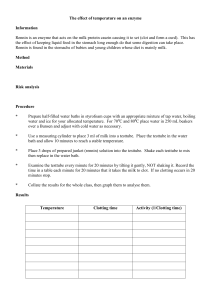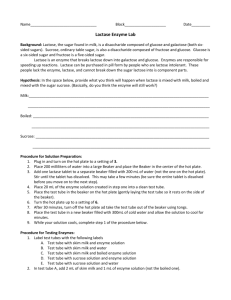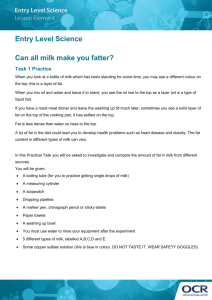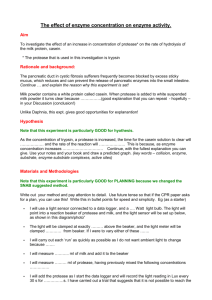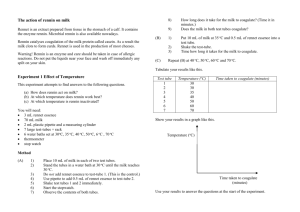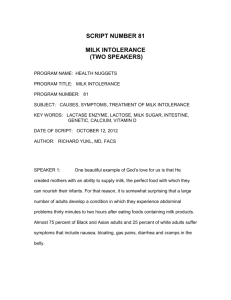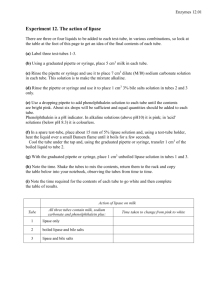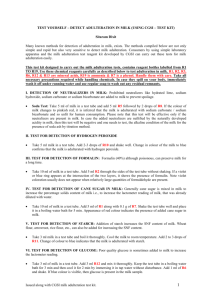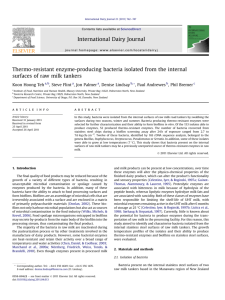Quantitative food test of the protein content in powdered milk
advertisement
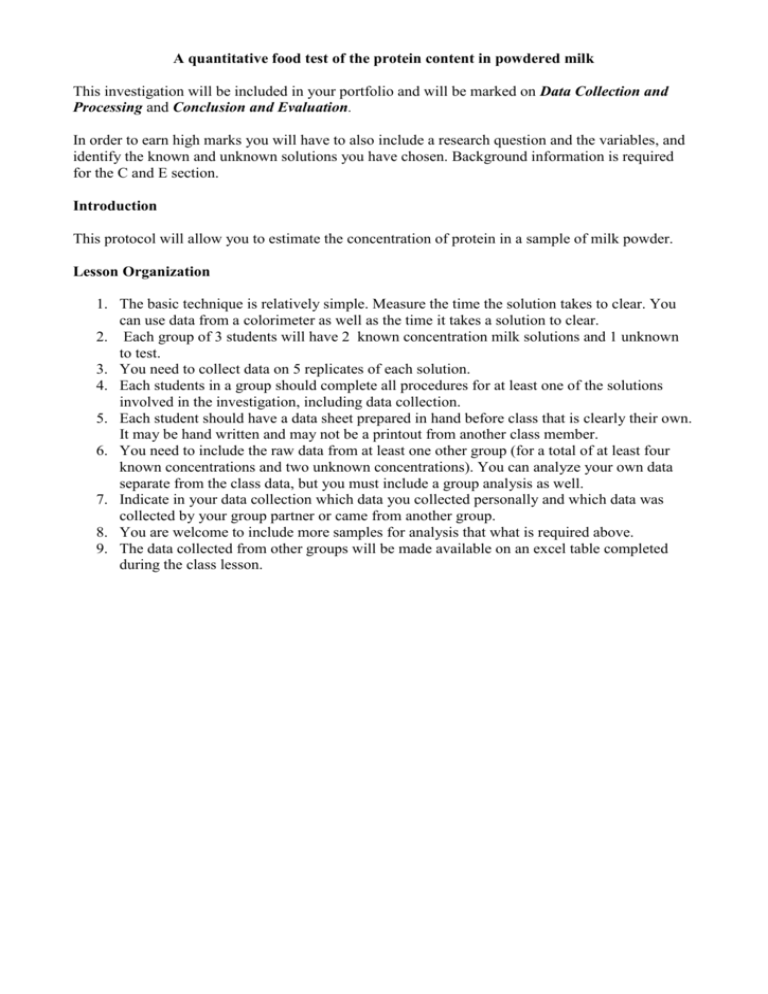
A quantitative food test of the protein content in powdered milk This investigation will be included in your portfolio and will be marked on Data Collection and Processing and Conclusion and Evaluation. In order to earn high marks you will have to also include a research question and the variables, and identify the known and unknown solutions you have chosen. Background information is required for the C and E section. Introduction This protocol will allow you to estimate the concentration of protein in a sample of milk powder. Lesson Organization 1. The basic technique is relatively simple. Measure the time the solution takes to clear. You can use data from a colorimeter as well as the time it takes a solution to clear. 2. Each group of 3 students will have 2 known concentration milk solutions and 1 unknown to test. 3. You need to collect data on 5 replicates of each solution. 4. Each students in a group should complete all procedures for at least one of the solutions involved in the investigation, including data collection. 5. Each student should have a data sheet prepared in hand before class that is clearly their own. It may be hand written and may not be a printout from another class member. 6. You need to include the raw data from at least one other group (for a total of at least four known concentrations and two unknown concentrations). You can analyze your own data separate from the class data, but you must include a group analysis as well. 7. Indicate in your data collection which data you collected personally and which data was collected by your group partner or came from another group. 8. You are welcome to include more samples for analysis that what is required above. 9. The data collected from other groups will be made available on an excel table completed during the class lesson. Apparatus and Chemicals For the class – set up by technician/ teacher: Milk protein solutions at concentrations of 1%, 2%, 3%, Unknown concentration of Milk protein A, B, C Enzyme, protease 1.0% solution For each group of students: Access to colorimeter/s (optional) Test tube rack/s 10cm3 test tubes, enough for 5 replicates per test for all solutions tested Syringe, 5 cm3, 1 (for enzyme) Syringe, 2.5cm3, (3 for milk protein solutions) Marker pen Stop clock/ stopwatch (5) Markers 100 ml enzyme 1% protease per group in a labeled flask 25 ml of each concentration of milk protein used in a labeled beaker Health & Safety Wear eye protection when handling proteases and wash splashes off the skin immediately. Method 1.Prepare the materials you need for your group. 2.Make sure all solutions are clearly labeled . 3.Set out 5 test tubes and label them clearly with the percentage and the replicate number 4.Do this for all of the samples tested, known and un known 5.To each tube, add 2.5 cm3 of the appropriate milk solution. 6.You may want to make a sample run to determine what you will call ‘clear’ before you begin formal data collection. 7.Add 5 cm3 of enzyme (1%) solution to the first tube and mix it gently by tapping the side of the tube. 8.Start the stopwatch and record the time it takes for the solution to become clear. 9.It may be easier to determine the end point with a colorimeter, or you could select text on a piece of white paper and record the time it takes for the text to become visible. 10.Repeat with all replicates and all other concentrations of milk powder, both known and unknown samples.






